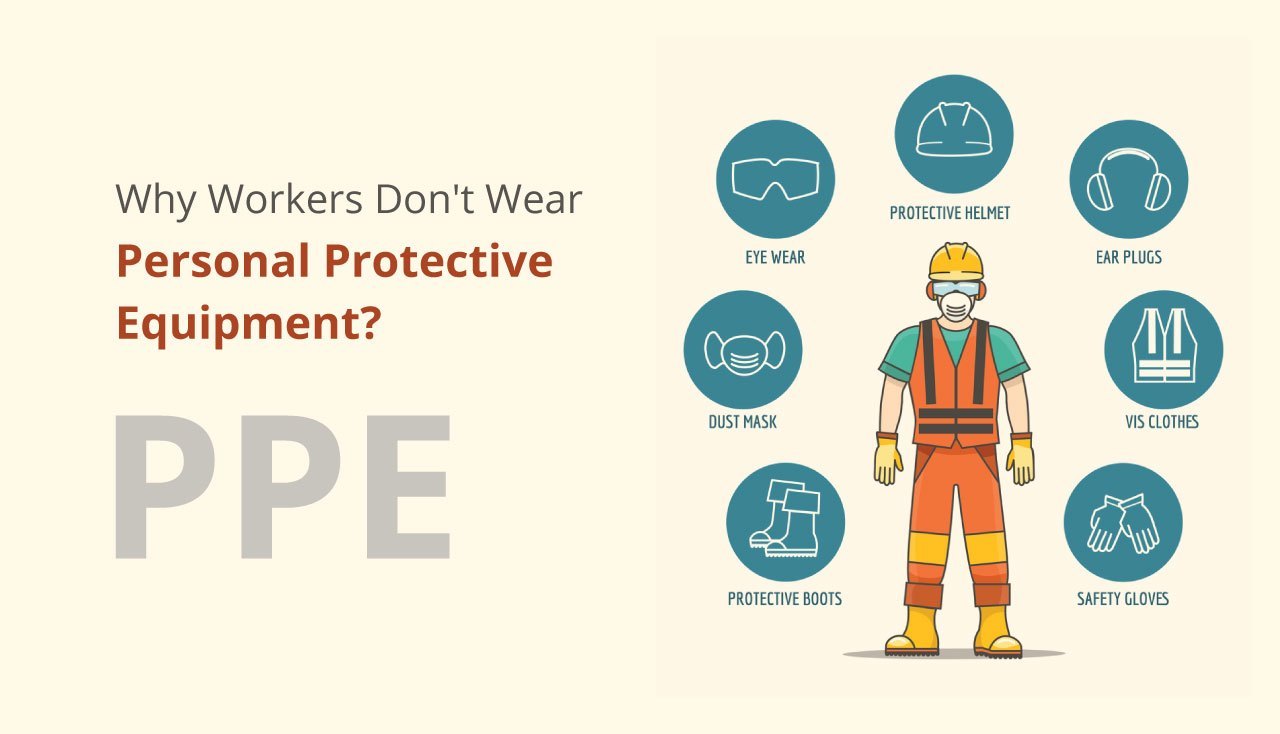Why Workers Aren't Wearing Their PPE. Find Out How To Overcome 3 Main Objections
16th Apr 2019

All safety managers should know the signs of a worker who isn’t properly protected from jobsite safety hazards.
Maybe your employees are refusing to wear their work uniforms, leaving their safety glasses in their lockers, or getting too many warning letters for not wearing their protective footwear. Unaware of the hazards of not wearing their personal protective equipment (PPE), these employees are putting themselves and others at risk by not protecting themselves properly on the worksite.
The question is, why aren’t these workers wearing their PPE? And, what dangers are they exposing themselves to as a result of these actions? By gaining an understanding of exactly why this is happening managers can more effectively address the root causes and create a safer workplace for everyone.
3 Reasons Your Workers Aren’t Wearing Their PPE
As the last line of defense in preventing workplace injuries or health-related issues, PPE has long served a core purpose on jobsites where hazards can be lurking around any corner. Falling objects, arc flash, contaminated air, chemicals, electric shocks, and excessive noise are just a handful of the perils that PPE can help protect against.
But when that PPE doesn’t fit right, looks awkward, or feels like overkill, it may be cast aside. Here are three main excuses employees give for leaving their PPE on the sidelines:
“It’s uncomfortable, too hot, or the wrong size.” Worker comfort is an ongoing concern for safety managers whose workers are on the front lines, dealing directly with situations where they can easily get hurt or even killed. Handing out safety glasses without taking into account those workers who might need a larger or smaller size, more face coverage, or a model that provides better ventilation, for example, virtually ensures that the safety glasses will be left in the worker’s locker. To avoid this problem, select PPE that’s not only appropriate for the hazards faced, but are physically comfortable as well. Sizing also matters, so be sure your workers are fitted properly for their apparel, helmets, safety glasses, and other PPE before letting them loose on the jobsite.
“I’ve done this task a million times and I know what I’m doing.” It only takes one arc flash, electric shock or flying particle to change a worker’s life forever, yet many workers assume that since they’ve done the work for years, they’re somehow immune to these hazards. A veteran construction worker who is using a grinder, for example, and whose eye gets hit by a flying chip of wood—all because he chose not to wear safety glasses that day—could be seriously injured as a result. Safety managers should keep a close eye on veteran employees who leave their safety glasses/goggles behind or who proceed onto jobsites without the right head protection. It’s a lot like having automobile insurance in that PPE truly proves its worth when those hazards rear their heads, and not just in the everyday work environment.
“I look like an idiot when I’m wearing this.” Much like a skateboarder would rather forgo his or her helmet and kneepads in order to look “cooler” while riding, employees who have unsightly or unfashionable PPE forced on them may opt not to wear it. Fortunately, this image issue can be resolved by not only educating employees about the importance of PPE, but also by making them a part of the selection process. By allowing a small group of workers to “test drive” the PPE and give feedback on it, you can determine any comfort, fit or related issues upfront. Order several trial samples of the PPE and have those workers test it out, keeping in mind that different people may prefer certain products, which means you may need to supply them with multiple options in order to meet your workforce’s needs.
With the wide variety of PPE available on the market today, safety managers can easily find products that not only provide the right level of protection from hazards, but that also cater to the worker’s need to be comfortable, stay cool, be agile and look good while doing it.
Source: Grainger KnowHow
